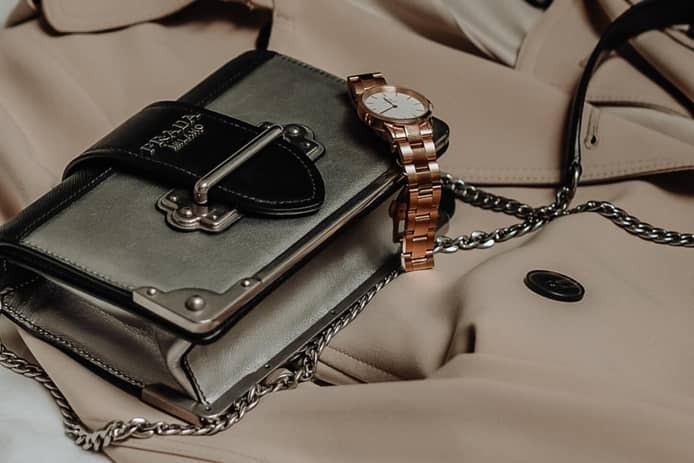Three pillars of resilience in luxury amidst economic challenges
21 October, 2023

Although some may foresee the end of the global luxury bubble following a significant decline in LVMH’s revenue growth, there’s hope yet for luxury brands and retailers.
The fashion industry as a whole, including the luxury sector, has faced several challenges in recent years, ranging from rapid inflation to decelerating economic growth, ongoing Covid-19 restrictions in China, and the start of a war in Ukraine in 2022. With the economic slowdown set to continue through 2023, it is becoming increasingly difficult for many luxury players to keep their competitive edge while remaining agile to industry and consumer shifts.
Three key strategies for luxury brands to navigate economic uncertainty
However, despite these challenges, many industry players are in a much stronger position than they were a year ago. Throughout 2020 to 2021, the fashion industry achieved a revenue surge of 21 percent, with EBITA margins doubling by six percentage points, reaching 12.3 percent, according to insights from McKinsey & Company's report 'The State of Fashion 2023.' Moreover, 95 percent of luxury brands saw an increase in profits in 2022, according to a report from Bain & Company, further highlighting ongoing consumer appetite for luxury goods.
The fundamentals for luxury consumption remain strong worldwide as wealthy consumers continue to travel and spend, remaining more shielded from hyperinflation.
Read More : Fashionphile named a Certified B Corporation
As sales within the luxury sector continue to persevere steadfastly, new research from Edited, an AI-driven merchandising experience platform, and global consultancy Bain & Co. examine three main reasons luxury brands should remain resilient amid economic turbulence.1. Expertise in high-low pricing
It's evident that the luxury market's price range has broadened since before the pandemic, with a noticeable shift towards more high-end items. Research from Edited found that the average price of luxury products has increased by 25 percent since 2019. Overall, luxury women's outerwear remains the most expensive luxury category, with an average price tag of 3,395.12 US dollars per item. Meanwhile, men's outerwear, averaging 3,305.94 US dollars, has witnessed a 20 percent price surge in the past four years.
Even though prices for luxury items have increased, many entry-level prices remain steady. By introducing more exclusive, high-ticket items, luxury brands can elevate their overall price spectrum while cashing in on more significant sales opportunities. However, the study's authors warn luxury brands that creativity and innovation should drive their high-low pricing strategy. To keep consumers engaged, fashion houses would be wise to ensure entry-level items shine on their own merit rather than appearing as mere shadows of their pricier counterparts.
2. Tighter reins on discount management
Over the years, countless studies have shown that consistent discounting subtly signals a compromise in quality, inadvertently diminishing the brand's perceived value in consumers' eyes. One way luxury brands can maintain their perceived value throughout these strong headwinds is by scaling back on discounts. At least on public discounts. Research from Bain & Co. found that luxury brands have reduced their public discounts by an average of 5 percent across both men's and women's ready-to-wear and accessories.
By discreetly offering deals to dedicated customers, luxury brands can preserve their allure and product exclusivity while strengthening customer loyalty and retention. To maintain an ongoing sense of stability, luxury brands should keep a tight grip on discount strategies, keeping a close eye on markdowns across all platforms while adjusting production as needed to avoid unnecessary sales.
3. More (responsive) product assortment
Since the pandemic, several luxury brands have adeptly tapped into rapidly growing categories, outpacing regular brands. While iconic luxury fashion houses like Gucci, Hermès, and Valentino recently expanded in makeup and skincare, others have tapped into budding, trendy categories such as lounge and leisurewear. Research from Edited shows luxury leisurewear assortments doubled from a pre-pandemic baseline of 100 to 200 and partywear to 194, while regular brands saw a more modest increase to 130.
With interest in these categories growing, luxury brands can easily reach a broader target audience by tapping into recent trends within their product ranges. By streamlining product lead times and strengthening supply chains, luxury fashion houses can swiftly capitalize on emerging trends and have a more agile assortment. However, the research authors noted that luxury brands should be wary of overextending into areas or categories where they hold no legitimacy so as not to lose their authenticity.
Moving into the final quarter of 2023, proactive strategies that heed these three factors, coupled with luxury brands' intrinsic appeal among consumers worldwide, are poised to ensure ongoing stability despite any potential bubble bursting.
Source: fashionunited.uk
